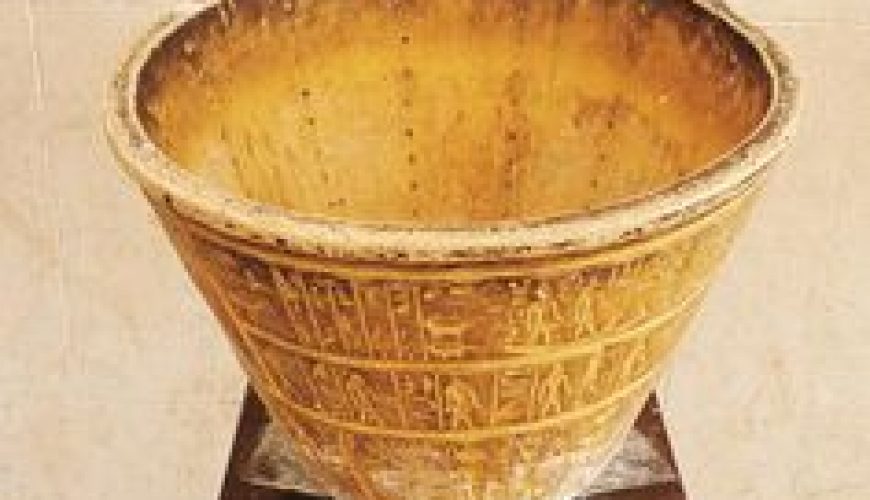The story today is about the oldest water clock.
The oldest water clock dates back to the historical period between 1417-1379 BC. During the reign of Amenhotep III, it was used in the temple of Amun-Ra in Karnak. The oldest known document on the water clock is the inscription of the tomb of Amenemhat in the sixteenth century BC, who is known as the inventor. These simple water clocks, of the type that flow out, consisted of stone vessels with water sloping on both sides to allow drip at a constant rate, Almost from a small hole near the bottom. There were twelve separate columns with continuously spaced markings inside to measure the passage of hours when the water level reached these columns. The columns were for each of the twelve months to allow for seasonal variations in the hours. Priests used these clocks to mark the time at night to perform temple rituals and make sacrifices at the correct time. These clocks may also have been used in the daytime. Part of a basalt water-clock with evaporation time markings on the interior as dots on the gyd column and the sceptre of a hieroglyph. Late Thirtieth Dynasty period. From Egypt. Petri Museum of Egyptian Antiquities, London
The inscriptions on the bowl from the outside show symbols of planets and celestial bodies, with a list of protective spirits for every ten days of the week in the ancient Egyptian calendar. As for the middle inscriptions, the polar stars are recorded in the form of deities and animals.
Dimensions: 48.5 cm in diameter and 95 cm in height. Material: Alabaster, marble stone
The story today is about the oldest water clock.
July 23, 2021
0 comment


Comment (0)